The food of Singapore is as diverse as the city itself, reflecting the region’s rich history and cultural melting pot. You’ll find influences ranging from Malay, Chinese, and Indian, to Middle Eastern, British, and Dutch. With tips augmented by friends’ (and Singapore natives) local recommendations, we’ve compiled the following guide of what to eat in Singapore and the best spots to find each dish.
Jump to:
Overview of Singapore Cuisine
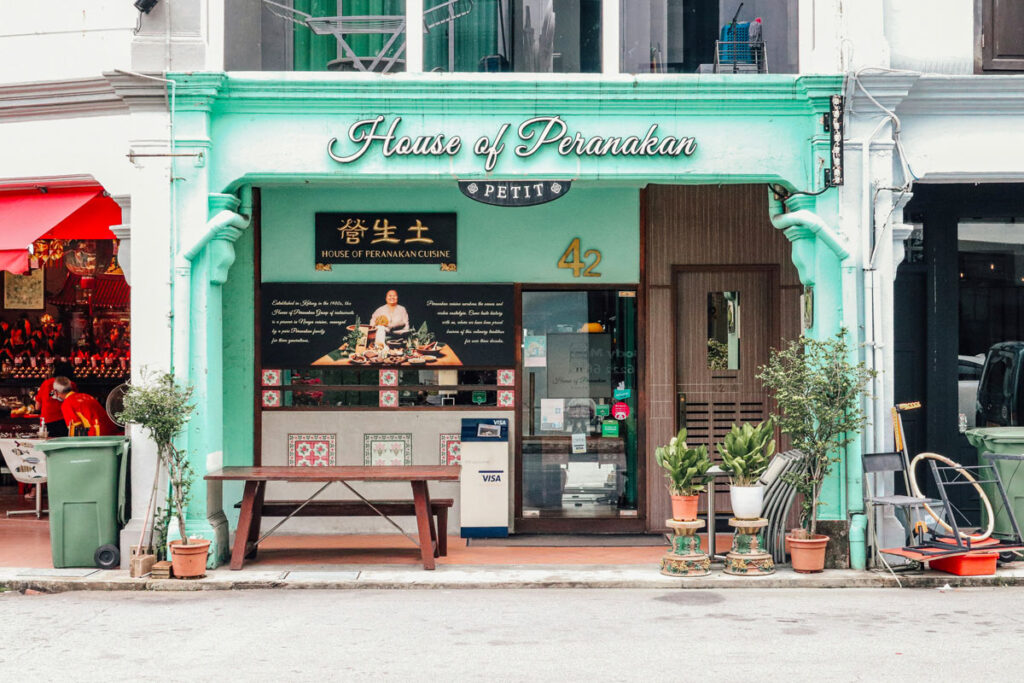
Singapore is the true crossroads of southeast Asia, both geographically and metaphorically. Over its long history as a key trading port, numerous cultures have passed through and settled its shores.
From ancient Malay and Indosphere empires, to the British and Dutch colonial periods, as well as immigrants from China, India, and the Middle East, each community has left an indelible mark on the regional cuisine.
Over time, Singaporean food has evolved into its own unique blend of spices and flavors, melded from these multiple distinct cultures. Nowhere else can you find street hawkers dishing up steaming noodle bowls of Chinese comfort fare, steps from a Middle Eastern restaurant awash in the aromas of an exotic bazaar, down the street from a refined British colonial establishment serving afternoon high tea.
This unique city-state is also one of the richest nations in the world. And while that wealth also supports a thriving industry of five-star restaurants and lavish dining experiences, in our humble opinion some of the best food in Singapore remains in the city’s roots.
The vast majority of traditional Singaporean foods have simple origins, and you’ll still find the best versions of the dishes served at no-frills food markets and hawker stalls. It is these classic dishes that we focus on in our guide below.
Breakfast
Kaya Toast and Kopi
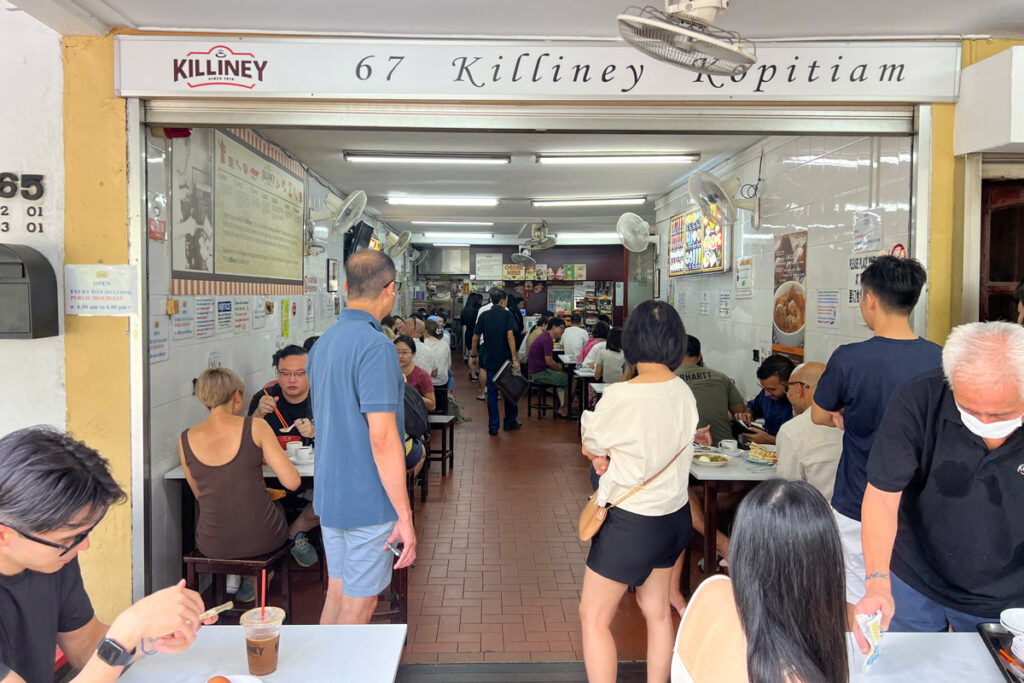
The traditional Singaporean breakfast staple, kaya toast is satisfying in its pure simplicity. Two slices of toast are buttered and smeared with kaya, or coconut jam. The dish typically comes with either soft-boiled eggs or other side dishes.
For the complete experience, be sure to also wash it down with an order of kopi, the regional take on coffee. Singapore-style coffee is unique in its roasting method, as the beans have a slight sugar glaze to them. The result is (obviously) sweeter, especially when it’s typically topped with either regular milk or condensed milk, and even more sugar if you desire.
Where to get it: Ya Kun Kaya Toast or Killiney Kopitam (each have multiple locations throughout Singapore)
Nasi Lemak
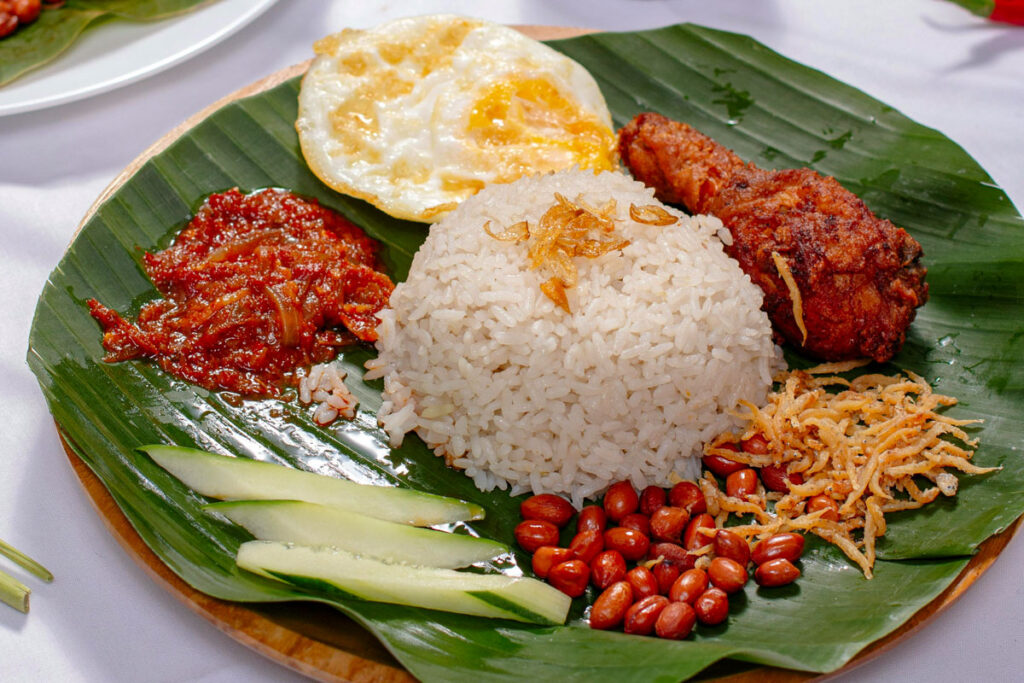
More adventurous eaters should also dive into the other traditional breakfast dish, nasi lemak. Coconut-milk infused rice comes with a variety of toppings, but the classic version includes egg, sambal chili, peanuts, and fried anchovies.
Where to get it: Ponggol is famous for the dish, but is a bit farther outside the city center. Killiney Kopitam also does a quality job, and both locations are closer to downtown.
Lunch and Dinner
Due to the simplistic nature of traditional Singaporean dishes, each of the following can be enjoyed at either lunch or dinner.
Laksa
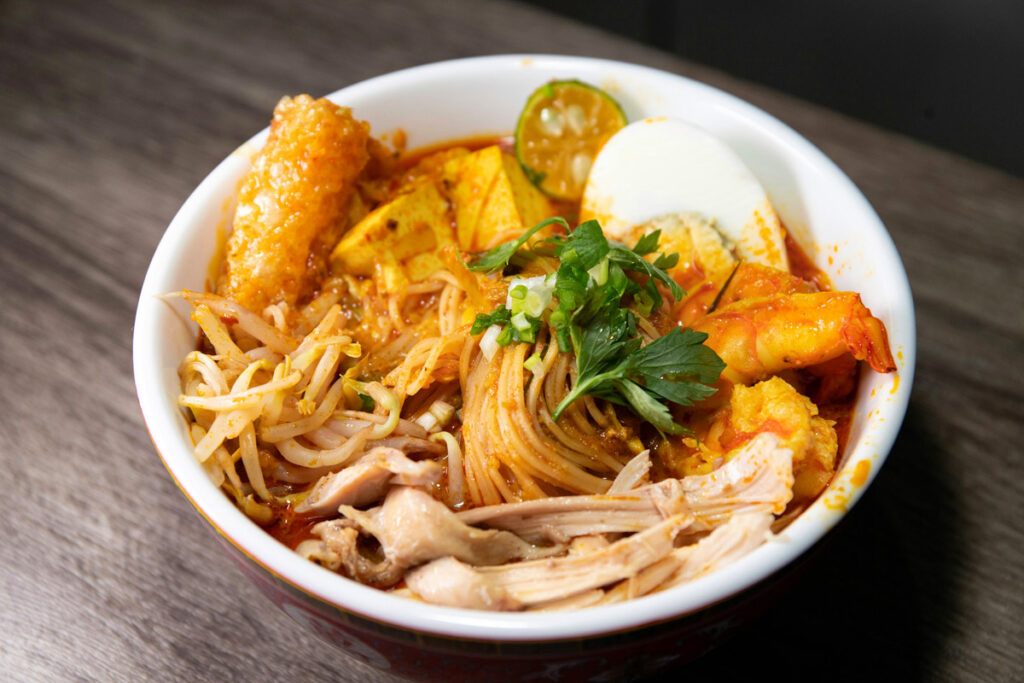
This comfort-food staple is one of our Singapore favorites. Hearty noodle bowls come in a flavorful coconut broth, with curry and other spices. Additional ingredients may vary slightly, but laksa typically includes prawns or chicken.
Where to get it: 328 Katong Laksa is famous for its take on the regional specialty. As validation, the restaurant walls are covered with photos of celebrity fans, including both Anthony Bourdain and Gordon Ramsay.
Prawn Mee
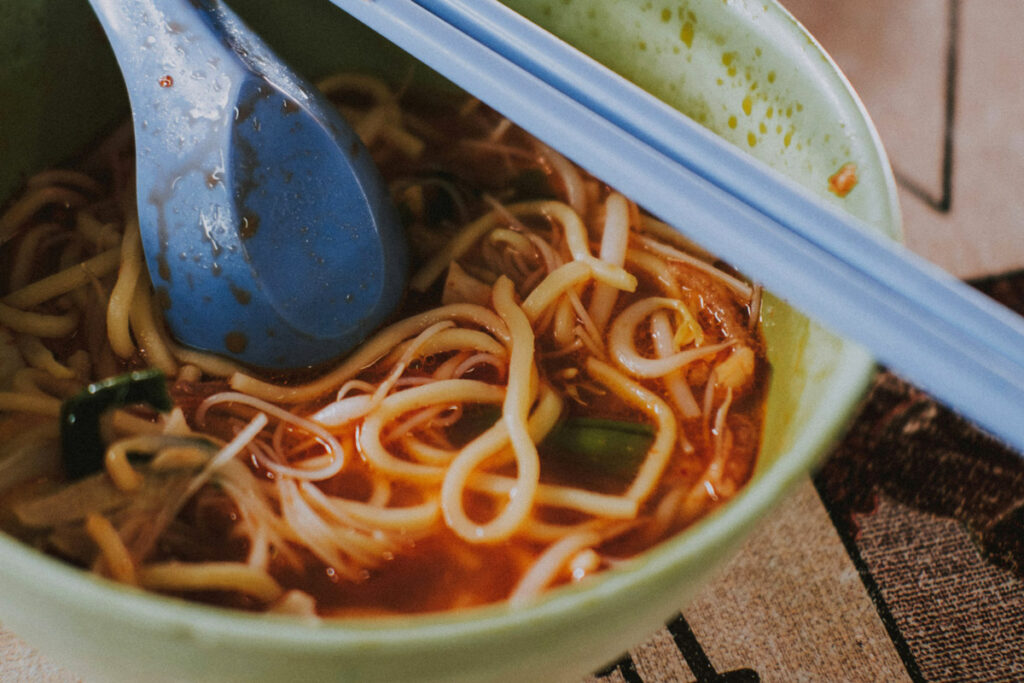
Another rich noodle soup, prawn mee literally means “prawn noodles”. The flavorful umami broth is spiced further with sambal, and packed with prawns, noodles, pork, eggs, bean sprouts, and more.
Where to get it: Beach Road Prawn Noodle House is, without a doubt, the most famous purveyor of prawn mee. However, you can also find these hearty bowls at numerous food halls around town.
Chili Crab
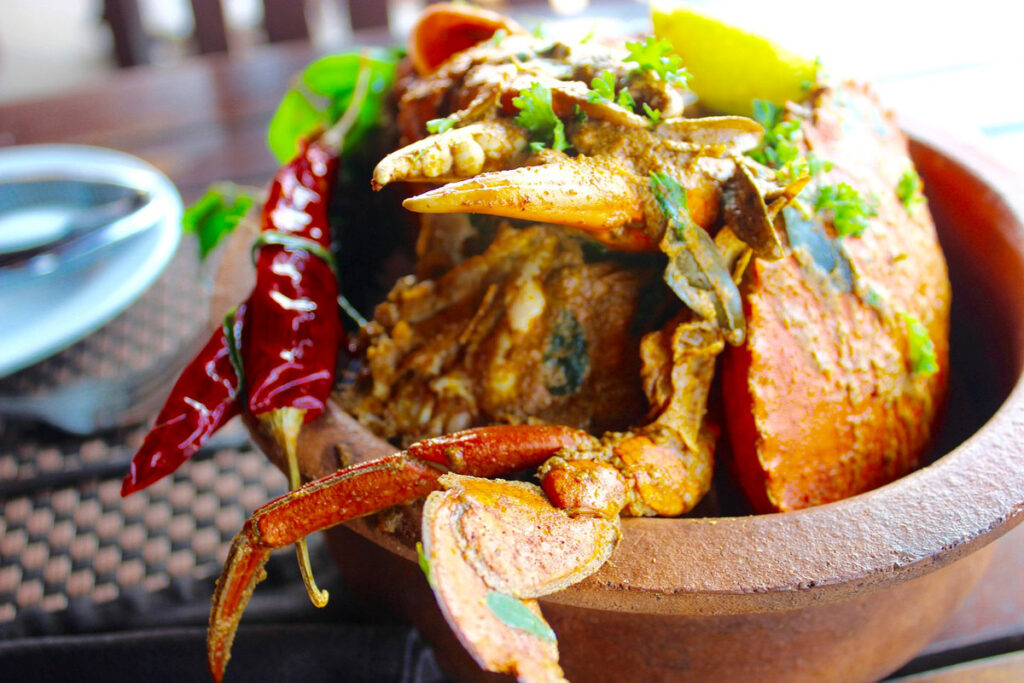
Chili crab is one of Singapore’s national dishes. Mud crabs are stir-fried with a chili sauce that is simultaneously spicy, sweet, and tangy, yet always bursting with flavor. Today, most restaurants offer a range of crab styles and sauces, but the core of the dish remains the same.
Consuming chili crab is a messy adventure, that makes a fun group experience. Most restaurants will provide free plastic gloves to wear while eating, in an effort to minimize your mess.
Where to get it: Jumbo and Long Beach are two of the most famous establishments, each with multiple locations. Both have been serving up chili crab for decades.
Chicken Rice
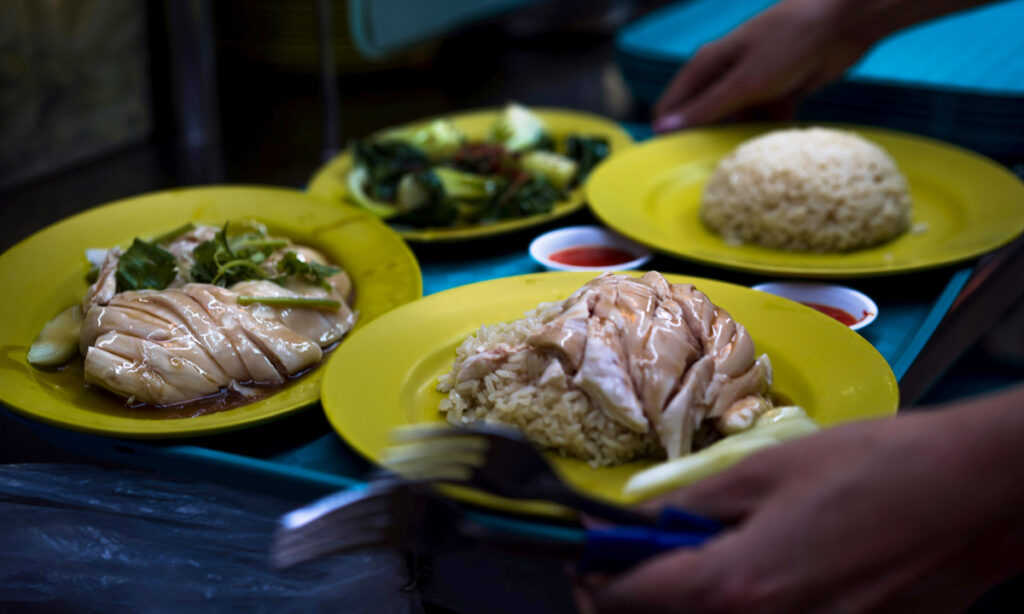
Another national dish of Singapore, you may know it by its other name, “Hainan chicken”. Introduced by Hainanese Chinese immigrants, the simple plate consists of poached chicken, served with white rice cooked in chicken stock. What could otherwise be a fairly bland dish is spiced up by a series of condiment choices — most commonly chili sauce, but also frequently served with soy sauce and ginger.
Where to get it: you can find this staple at nearly every food court or hawker stall, and it’s such a simple dish, it’s hard to go wrong. However, locals steered us to Boon Tong Kee. As one of the more well-known sit-down restaurants, Boon Tong Kee offers a more elevated experience than the hawker stalls.
Snacks
Singapore Satay
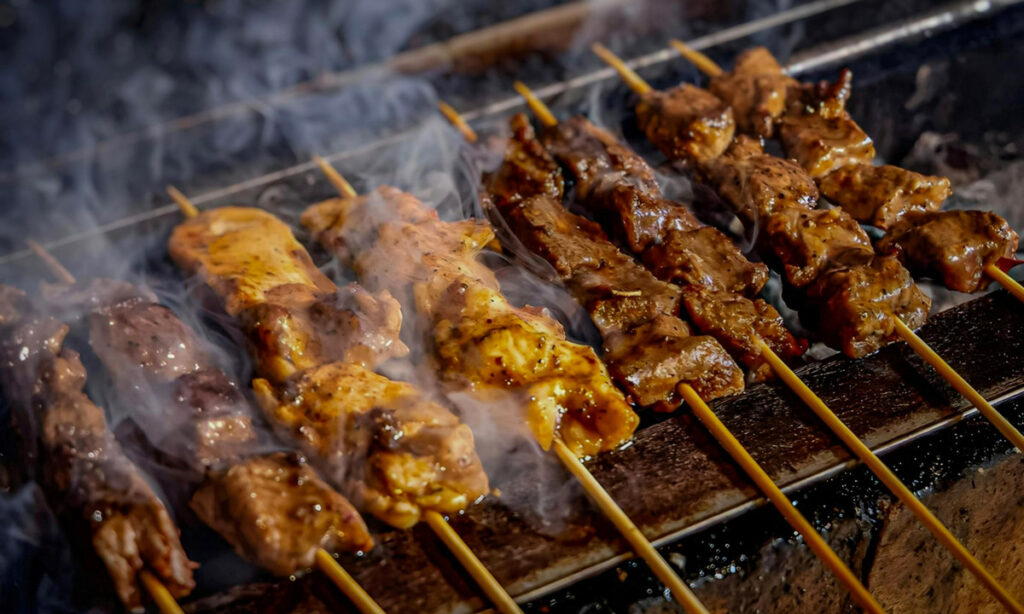
A staple throughout southeast Asia, this is one of the most popular street foods in the region. Skewered meats are marinated, seasoned, and grilled, before being served with flavorful dipping sauces. While nearly every stall will serve up their own take on the simple classic, peanut sauce is key to the authentic Singaporean style.
Where to get it: Satay is ubiquitous around town — you’ll truly find it at every food court and hawker stall. But if you need help narrowing down your options, 168 C.M.Y. Satay has received a nod in the Michelin Guide for their take on the skewer. They’re located at stall #02-168 inside the Chinatown Complex Food Centre.
Or, swing by Haron Satay (stall #55 in the East Coast Lagoon Food Village). Here, you can take your purchase to the beach located just outside, for some waterfront dining.
Orh Jian (Fried Oyster Omelet)
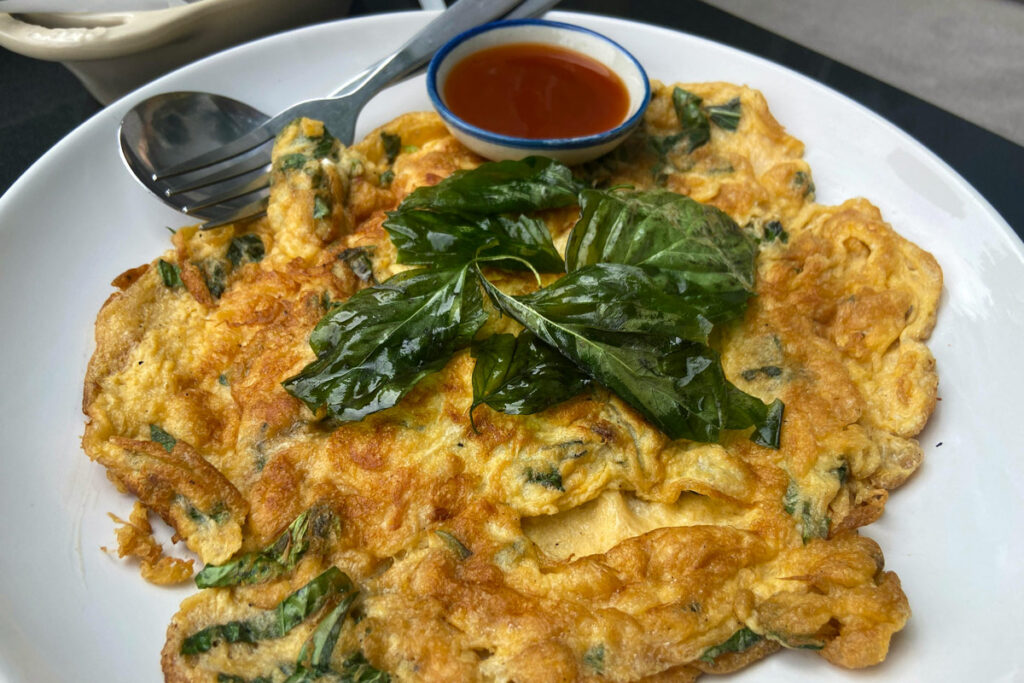
Whether it’s breakfast, lunch, or dinner, orh jian is such a versatile snack that you’ll equally see it consumed at any hour of the day.
Ocean-fresh oysters are baked into a delectable egg omelet, wok-fried, and typically served with chili sauce for an extra flavor kick. Omelets are cooked with or without starch — you’ll choose between (orh luak, starchy and crispy) or orh nerng (without starch).
Where to get it: you’ll find orh jian at nearly every food court and hawker stall in town, and you really can’t go wrong. However, foodies may enjoy venturing to either the Michelin-plate Huat Heng Fried Oyster or the Michelin Bib Gourmand awarded Song Kee Fried Oyster.
Roti Prata
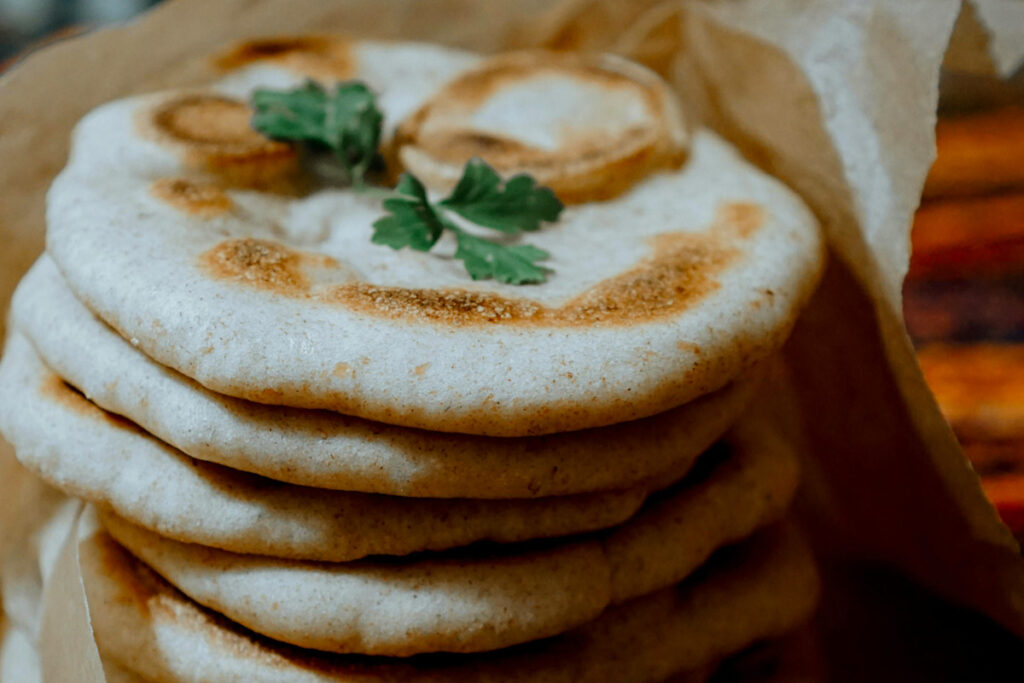
While technically an import from Indian immigrants, roti prata has become a household staple in Singapore (and one of our personal favorite snacks). This flaky flatbread can alternately come buttery and delectable or crisp and crunchy, depending on the vendor. You can also choose to eat it plain or stuffed with various proteins, but any version will be served with a host of flavorful curries and other dipping sauces.
Where to get it: one of the more well-known establishments is Mr. and Mrs. Moghan Roti Prata, which serves up 17 varieties of the dish. They’re open until just after lunch or whenever the dough runs out – whichever comes first – so plan your visit accordingly.
Drinks
Singapore Sling
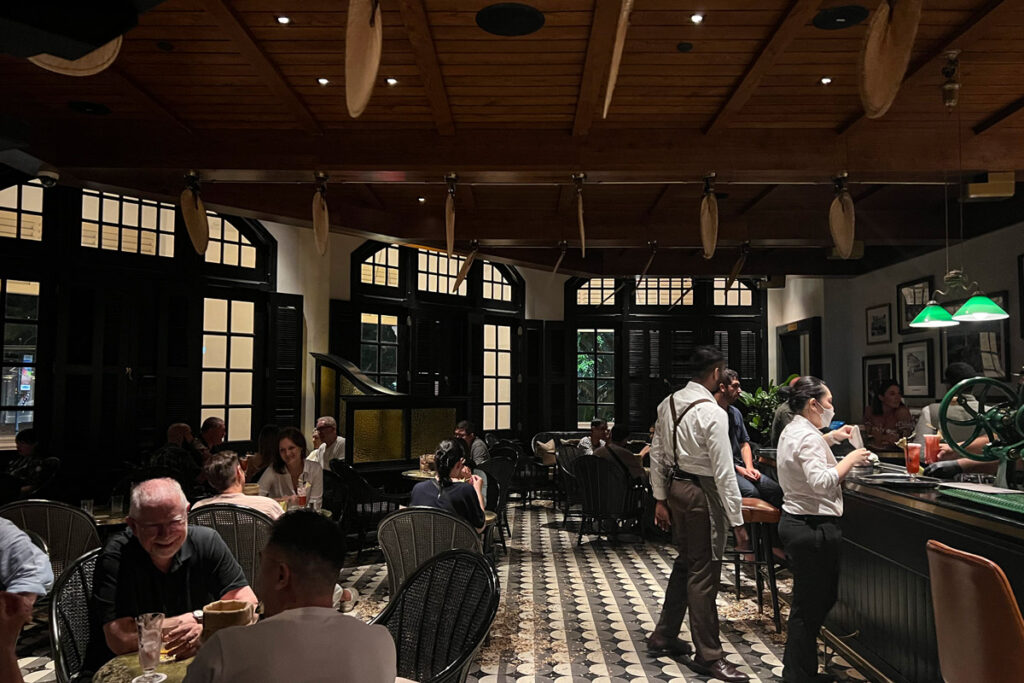
The Sling was first invented at the Raffles Hotel’s Long Bar, where in 1915 a creative bartender first mixed gin, brandy, and tropical juices. Today, it’s the national drink of Singapore, and comes chilled with a host of fresh fruit garnishes. It’s a refreshing treat any time of the year, when you’re just 140 kilometers from the equator.
Where to get it: it only feels appropriate to throw one back where it all began, at the Raffles Hotel Long Bar. They know the hold they have on the tourist market, and ordering a glass will set you back a cool S$42. However, you’re paying for the experience, and savoring the sweet cocktail in the 135-year-old watering hole, munching on the complimentary peanuts whose shells are strewn all over the floor, is pretty fun.
Sugar Cane Juice
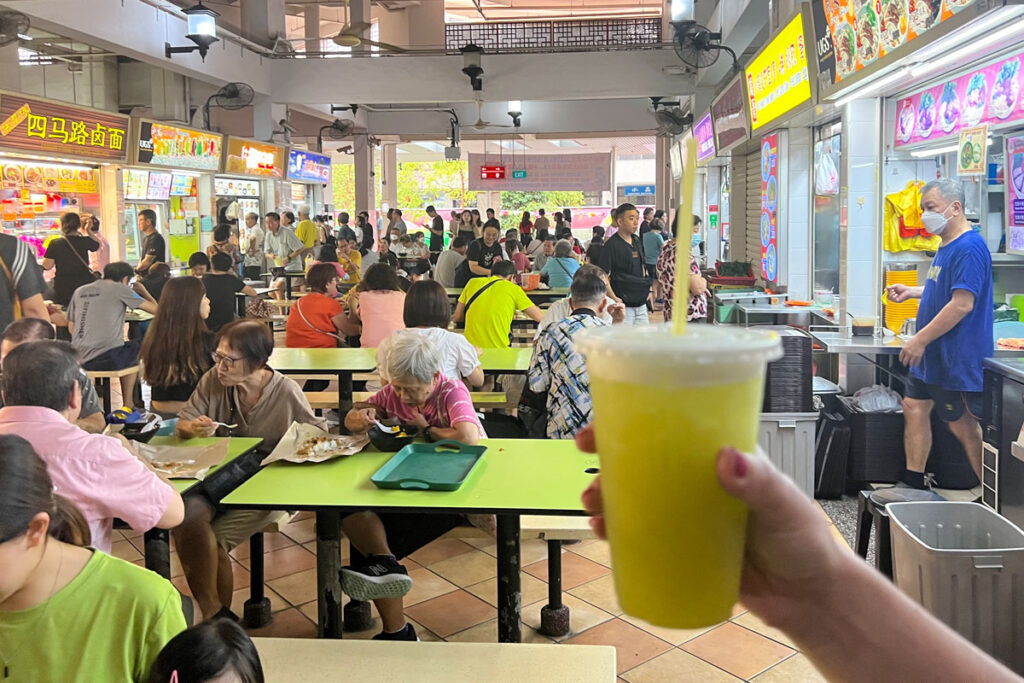
This treat is as straightforward as it sounds. Long stalks of sugar cane are run through a juicing machine, and the result is a sweet refresher sure to delight any sweet tooth (and horrify any dentist). Locals will recommend you add sour plum — it cuts through some of the more overpowering sweetness, and adds a bit of flavor complexity.
Where to get it: again, you’ll find reasonably priced options at most food centers around town. For what it’s worth, we visited the slightly more famous Tong Bee Sugar Cane Juice (stall #01-84 inside the Albert Centre Market and Food Centre) and were not disappointed.
Have more time to explore Singapore? Check out our guides to 3 Days in Singapore, along with the cultural districts of Chinatown, Kampong Gelam, and Katong Joo Chiat.
